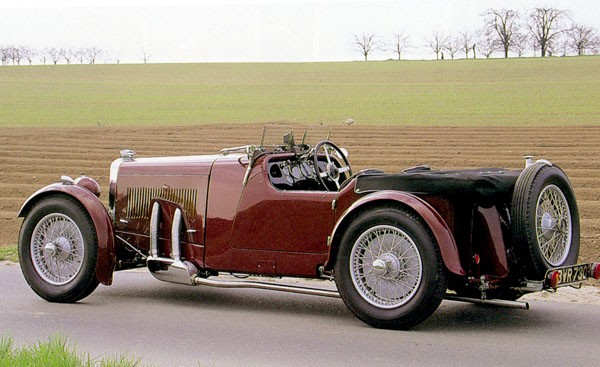Early Aston Martins varied in detail specification, but one stood far above the rest: the Ulster, named after the venue of Britain’s oldest road race, the Tourist Trophy. Only 21 of these fabulous machines were produced for customers between 1934 and 1935, with a few extras for the works team to race.
Aston Martin owed its existence to competition and was started by two former racing cyclists, Robert Bamford and Lionel Martin, who appeared independently in car trials and hill climbs racing small Singer sports cars soon after the end of the First World War.
Martin was a more aggressive driver and often forced his car to the very limit of its power – so much so that he often had engine trouble. Bamford was just the man to help. Between them, Bamford and Martin resolved to build their own car, incorporating all the good qualities of the Singer, notably its nimble handling, and hopefully avoiding its faults, the main one being its lack of reliability. But, most important, their new machine had to be a road car which could also be raced. It took its name, Aston Martin, from Martin’s early exploits with a Singer at the Aston Clinton hill climb in Buckinghamshire.
Martin was a gregarious fellow with many sporting friends. Inevitably, Bamford and Martin began building cars for them and by 1921, no meeting at the national racetrack, Brooklands, was complete without Aston Martins in the paddock. They were never quite as fast as the chief competition because they were really intended for use on the road and weighed more than spartan track cars of the day. In any case, Martin was a big chap and liked a sturdy chassis beneath him.
But despite their weight, Astons could always be relied upon to put on a good performance. Both Bamford or Martin ran their business for pleasure rather than profit so it was hardly surprising the firm nearly went bust in 1925.
The general feeling was that there should always be a place for such a marque in Britain and it was revived in 1926 by two society enthusiasts. They appointed as managing director a man who will always be remembered as the ‘Father of Aston Martin’ – Augustus Cesari Bertelli. He was a gifted Italian mechanic. Along with his partner WS Renwick they produced a new Aston Martin, a two-seater, with a new 1.5-litre single overhead cam four-cylinder engine. Bertellis’ good humour and tact stood them in good stead making them a favourite with customers. Needless to say, such customers entered all the best races and Bertelli was able to offer just what they wanted: almost limitless variations on the 1.5-litre four-cylinder engine and chassis that gave Aston Martins their character.
By this time the company was seriously involved in sportscar racing and trials, and were successful at Le Mans. Around this time a two-seater Le Mans was introduced.
The Ulster was effectively a replica of the works racing cars. The Ulster became the greatest of the early Astons, not only because it was the last and most highly developed of the original 1.5-litre machines, but because it was the closest to an outright racing car. For a small car weighing nearly 1016kg, it displayed a remarkable turn of speed thanks to its highly tuned and beautifully built overhead camshaft dry sump engine. It had four forward gears and a live rear axle. A top speed of 161km/h was claimed.
All great things must come to an end however and Bertelli retired in 1936. From then on Aston Martin lurched from one financial crisis to the next, frequently surviving thanks only to the heroic efforts of an enthusiastic English clientele.









